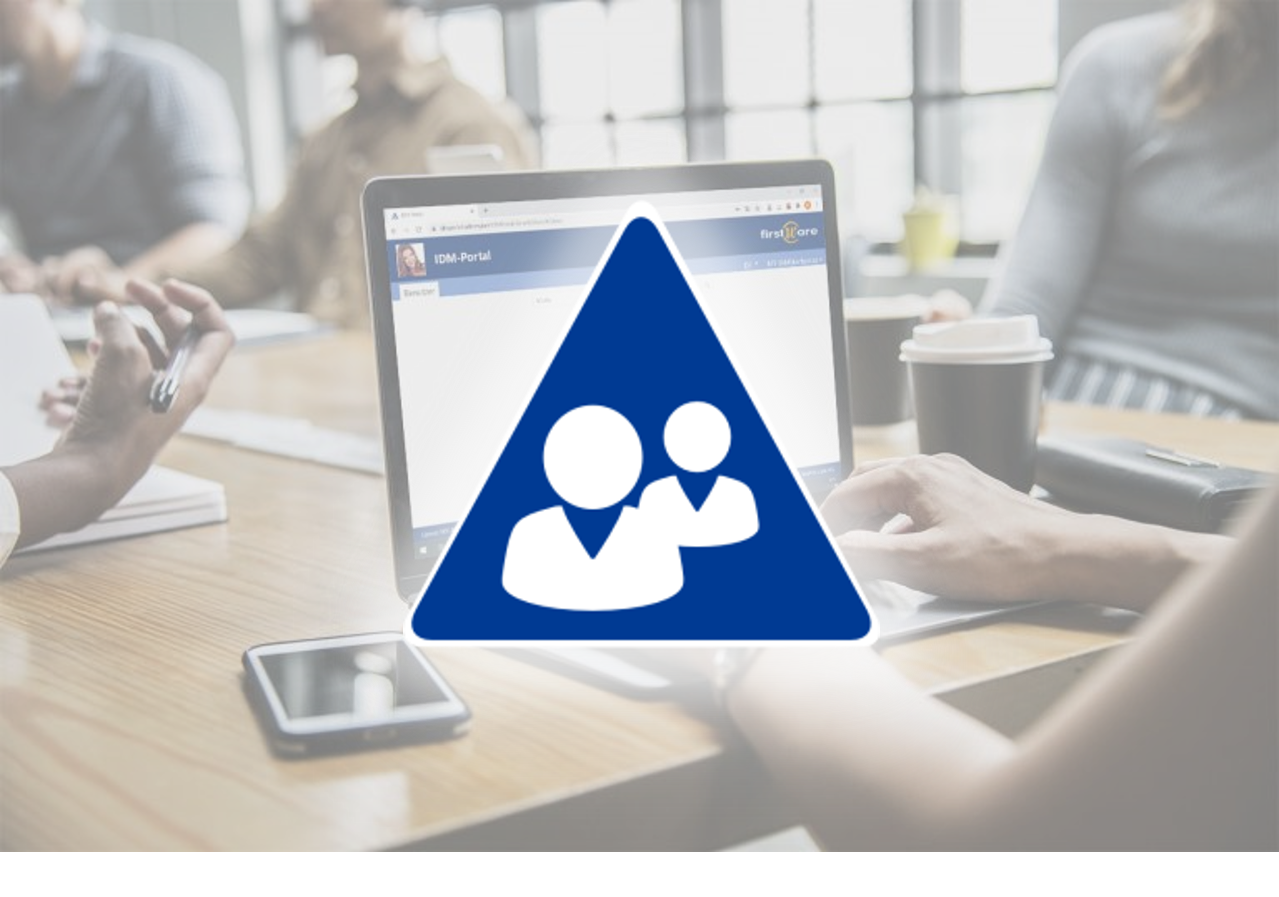Optimize onboarding processes for public administrations
Public administrations have often grown unstructured over the years, leading to outdated systems and IT departments overwhelmed with administrative tasks. Consequently, onboarding processes for new employees are time-consuming and unnecessarily complicated.
Many districts and municipalities rely on our IAM solution, IDM-Portal. By implementing delegation and automation, the onboarding process becomes faster, more secure, and more efficient. In this article, we present our solution approach.
Index
Many IT-challenges in public administration
Growing IT structures and lack of software solutions
Many districts and public administrations face common challenges when onboarding new employees. There are numerous forms and checklists to be completed, often passed back and forth between departments. This can lead to important sections being overlooked or multiple file versions being used. Additionally, tasks completed without feedback can cause unnecessary delays for subsequent handlers.
Manual data entry in public administration also suffers from inconsistent data quality. Automatic data extraction, such as from a signature solution, requires frequent corrections, making the process inefficient.
Typical onboarding process in public administration
These are onboarding challenges for the public sector
In public authorities, new employees are usually created in the system used by the HR department. Once this has been done, they inform all other parties involved, from IT to managers, assistants, website managers and various other departments.
Typically, the information is followed by the dispatch of many checklists and forms to be completed. The individual tasks are often completed more quickly than the subsequent documentation and follow-up information required by other employees. A quick phone call replaces the written form, and a lot of information is lost.
It is difficult to maintain an overview. It is not known whether individual areas have already completed their sub-steps. Certain dependencies complicate the overall process, and in some cases tasks cannot even be started without certain prerequisites. In any case, the consequence is at least unnecessary delays and additional work.
You can quickly recognize the problems:
|
Many people involved |
Multiple forms |
Data quality |
|
|
|
Solution: Realise the onboarding process in one system
The main focus should be on mapping the onboarding process in one system. This improves traceability and can replace numerous to-do lists that have to be maintained individually. Many of the work steps can also be automated and delegated to a large extent. Automation increases data quality and saves time.
Delegation relieves the burden on in-house IT. As a rule, it becomes the controlling authority and therefore has time to deal with more complex special cases.

Simple user creation, directly in the AD using the IDM-Portal, can be delegated to specialist departments.
Not every action necessarily has to be carried out by IT – after all, certain naming conventions and rules exist in every district or administration anyway. These can be easily configured and implemented using our IAM solution IDM-Portal. All that remains is to enter the master data. The standard processes can therefore be easily adopted by HR and managers. Notifications can be implemented after each process step.
All processes and manual procedures initiated via the IDM-Portal are logged and are therefore easy to trace.
This is how it works: Automate onboarding processes
Automated onboarding process with the IDM-Portal
Automated entries and delegation to specialist departments
A typical automated process for public administration is as follows:
After the new employee signs the contract, the HR department uses the existing HR tool to create the user and enters known data such as:
- Last name,
- first name,
- date of birth,
- date of hire and
- future department.
Once this step has been completed and the new employee has been saved, the technically relevant data is automatically transferred to our IDM connector.
An AD user is created for the new employee, based on the surname and first name without any manual intervention from the IT. The necessary mandatory details are generated – in accordance with company guidelines – using previously defined criteria.
Once the account exists, the associated mailbox and home drive are created automatically.
This entire provisioning process takes just a few minutes.
The departments responsible for further processing are then notified. In the case of administrative districts, the department assistant or manager often makes further entries here, such as
- Office number and
- necessary group memberships
Only after these additions have been made is the IT department needed to make any additions that cannot be automated and to carry out the final check.
As soon as the user has been activated by IT, the typical public administration departments, such as the person responsible for the homepage, the person responsible for time recording and the staff council, are automatically informed.
The new employee receives their access data at the start of their employment and can start working immediately.
Conclusion
The onboarding process requires an efficient approach, as it is an important part of normal day-to-day business. As many departments are involved and security is paramount, IAM solutions such as the FirstWare IDM-Portal offer automated processes that significantly reduce manual data maintenance and human error.
Automation and delegation functions as well as the connection to other systems (e.g. HR databases) lead to higher data quality and more security as well as much faster onboarding of new colleagues.
So it doesn’t have to be complicated or time-consuming. Instead, it can be fast and secure for everyone involved.
You can also contact our team by telephone on
+49 81 969 984 330.
About FirstAttribute
FirstAttribute AG is an independent, German cloud service and software company specializing in Identity & Access Management (IAM) for AD and M365.
Since its foundation in 2001, FirstAttribute has successfully worked with many well-known medium-sized and large companies in Germany and internationally.
Contact us for any questions about identity and access management.






